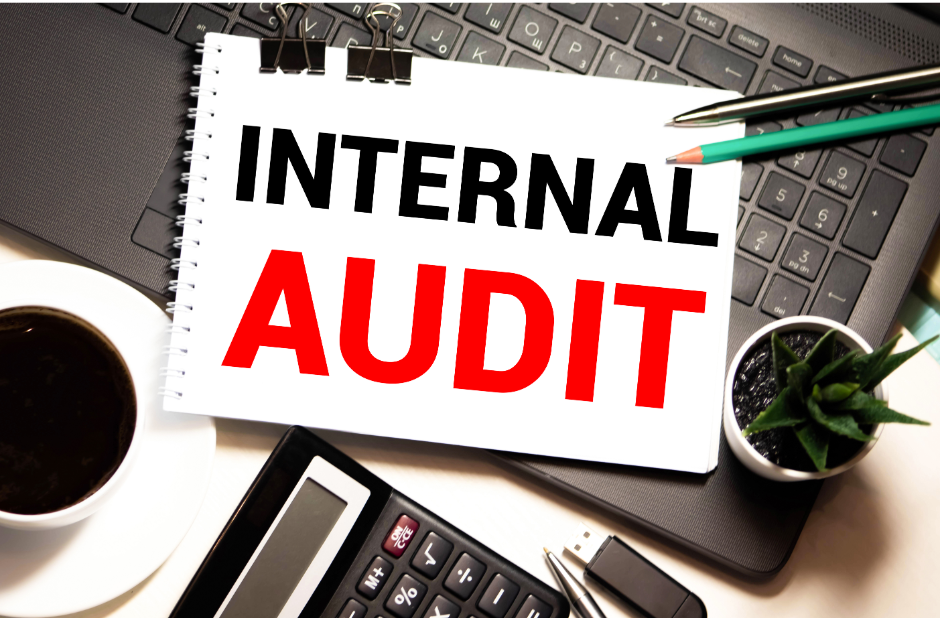Internal Audit is a cornerstone of robust corporate governance, risk management, and operational excellence. In an era of evolving regulations and complex business risks, organizations rely on internal auditing to safeguard assets, ensure compliance, and drive strategic decision-making. This comprehensive guide explores every facet of Internal Audit, offering actionable insights to help businesses thrive.

What is Internal Audit?
Internal Audit is an independent, objective assurance and consulting activity designed to add value and improve an organization’s operations. It evaluates risk management, internal controls, and governance processes to ensure accuracy, compliance, and efficiency. Unlike external audits (which focus on financial statements), Internal Audit provides a 360-degree view of organizational health.
Key Objectives of Internal Audit
Risk Mitigation: Identify and prioritize risks threatening business objectives.
Compliance Assurance: Verify adherence to laws, regulations, and internal policies.
Process Optimization: Uncover inefficiencies and recommend improvements.
Fraud Prevention: Detect vulnerabilities and implement anti-fraud measures.
Strategic Alignment: Ensure operations align with organizational goals.
The Role and Importance of Internal Audit
Why Internal Audit Matters
Governance Enhancement: Strengthens oversight by evaluating board effectiveness and ethical practices.
Risk Management: Proactively addresses operational, financial, and reputational risks.
Regulatory Compliance: Mitigates penalties by ensuring adherence to standards like SOX, GDPR, and ISO.
Stakeholder Confidence: Builds trust with investors, regulators, and customers through transparency.
Core Responsibilities of Internal Auditors
Risk Assessment: Map risks to business objectives and prioritize audit activities.
Control Evaluation: Test the design and effectiveness of internal controls.
Audit Planning: Develop risk-based audit plans aligned with organizational priorities.
Reporting: Deliver clear, actionable reports to management and the audit committee.
Follow-Up: Monitor the implementation of corrective actions.
The Internal Audit Process: A Step-by-Step Framework
1. Planning Phase
Risk Identification: Use workshops, interviews, and data analytics to pinpoint risks.
Scope Definition: Determine audit objectives, timelines, and resources.
Engagement Letter: Formalize terms with management.
2. Fieldwork Phase
Data Collection: Review documents, conduct surveys, and analyze workflows.
Control Testing: Validate controls through sampling, observation, and re-performance.
Interviews: Engage stakeholders to gather insights and validate findings.
3. Reporting Phase
Draft Report: Highlight findings, root causes, and recommendations.
Management Review: Discuss results with stakeholders for accuracy.
Final Report: Issue a concise, prioritized document for the audit committee.
4. Follow-Up Phase
Action Tracking: Ensure management addresses high-risk issues promptly.
Continuous Monitoring: Use automated tools to track control effectiveness.
Benefits of a Strong Internal Audit Function
Improved Decision-Making: Data-driven insights empower leaders to act strategically.
Cost Savings: Reduces waste, fraud, and non-compliance penalties.
Operational Resilience: Strengthens adaptability to market changes and disruptions.
Reputation Protection: Minimizes scandals and builds brand trust.
Challenges in Internal Auditing & How to Overcome Them
Common Challenges
Resource Constraints: Limited staffing or budget hampers audit coverage.
Evolving Risks: Cyber threats, ESG demands, and regulatory changes require agility.
Stakeholder Resistance: Departments may perceive audits as disruptive.
Solutions
Leverage Technology: Automate workflows with AI-powered tools.
Upskill Teams: Train auditors in data analytics, cybersecurity, and soft skills.
Adopt a Consultative Approach: Position Internal Audit as a partner, not a critic.
Best Practices for Effective Internal Auditing
Align with Organizational Goals: Focus audits on areas impacting strategic priorities.
Embrace Data Analytics: Use tools like Tableau or Power BI for predictive insights.
Foster Collaboration: Partner with risk, compliance, and IT teams for holistic insights.
Continuous Improvement: Regularly update audit methodologies and tools.
Types of Internal Audit
Financial/Controls Audits
This core internal audit type evaluates the effectiveness of an organization’s internal controls over financial reporting. Internal auditors assess whether financial records are accurate and reliable, transactions are correctly recorded, and safeguards are in place to prevent fraud or errors. This helps ensure the integrity of the company’s financial statements and protects against financial risks.
Compliance Audits
These audits ensure the organization adheres to relevant laws, regulations, industry standards, and internal policies. This can involve environmental regulations, data privacy laws, human resource policies, or occupational safety standards. Compliance audits identify potential areas of non-compliance and recommend corrective actions to mitigate risks associated with fines, penalties, or reputational damage.
Operational Audits
Operational audits assess the efficiency and effectiveness of an organization’s business processes. Internal auditors examine how well these processes are designed, implemented, and controlled. They identify areas for improvement, redundancies, or bottlenecks impacting performance. The goal is to optimize processes for increased efficiency, cost savings, and overall organizational performance.
IT Audits
With increasing reliance on technology, IT audits assess the organization’s information technology (IT) infrastructure, controls, and security measures. This includes reviewing data security protocols, access controls, disaster recovery plans, and the overall effectiveness of IT systems. IT audits identify vulnerabilities and recommend improvements to safeguard sensitive data, ensure business continuity, and mitigate cyber security risks.
Additional Specialized Audits
Beyond these core types, internal audits can be tailored to address specific areas of concern within an organization. Examples include:
- Construction Audits: These audits focus on construction projects, reviewing project management practices, contract compliance, cost controls, and potential schedule delays.
- Environmental Audits: These audits assess an organization’s environmental compliance and impact. They may review waste management practices, energy consumption, and pollution control measures.
- Investigative Audits: These audits investigate specific allegations of fraud, misconduct, or irregularities within the organization.
Internal Audit vs External Audit (Statutory Audit)
| Feature | Internal Audit | External Audit (Statutory Audit) |
| Who Performs It | Employees of the organization or an internal audit department | Independent accounting firm hired by the company |
| Purpose | Improve operations, identify areas for improvement, and ensure effectiveness of internal controls | Provide an independent opinion on the fairness and accuracy of the company’s financial statements |
| Scope | Broad range of areas including financial reporting, operational processes, compliance, risk management, and governance | Primarily focuses on financial records, transactions, and accounting practices |
| Focus | Forward-looking, identifying potential risks and opportunities for improvement | Historical, providing assurance on past financial performance |
| Reporting | Reports to senior management and the board of directors | Reports to shareholders and regulatory bodies |
| Impact on Financial Statements | Does not directly impact published financial statements | May result in adjustments to the financial statements |
| Independence | May have some familiarity with the company’s operations, potentially impacting objectivity | Completely independent of the company, ensuring objectivity |
| Frequency | Can be conducted continuously or periodically throughout the year | Typically conducted annually |
| Regulation | Not mandatory for all companies, but may be required by some regulations or good governance practices | Mandatory for publicly traded companies and some private companies based on size or risk profile |
The Future of Internal Audit
AI and Automation: Machine learning streamlines risk assessment and anomaly detection.
ESG Integration: Audits will prioritize sustainability and social responsibility metrics.
Agile Auditing: Shift from annual reviews to real-time, iterative assessments.
FAQs About Internal Audit
Q1: How does Internal Audit differ from External Audit?
A1: Internal Audit focuses on risk management and operational efficiency, while External Audit verifies financial statements for shareholders.
Q2: What qualifications do Internal Auditors need?
A2: Generally Chartered Accountants and Members of ICAI are considered as the Qualified Professionals for Internal Audit.
Q3: Can small businesses benefit from Internal Audit?
A3: Yes! Even SMEs can adopt scalable practices like periodic control reviews.
Conclusion
Internal Audit is not just a compliance checkbox—it’s a strategic enabler. By embracing technology, fostering collaboration, and staying ahead of emerging risks, organizations can transform their Internal Audit functions into engines of growth and resilience. Whether you’re a startup or a multinational, investing in a robust Internal Audit framework is key to long-term success.
Call to Action: Ready to optimize your Internal Audit process?
Contact us for a free consultation or checkout our Internal Audit Checklist to get started!
